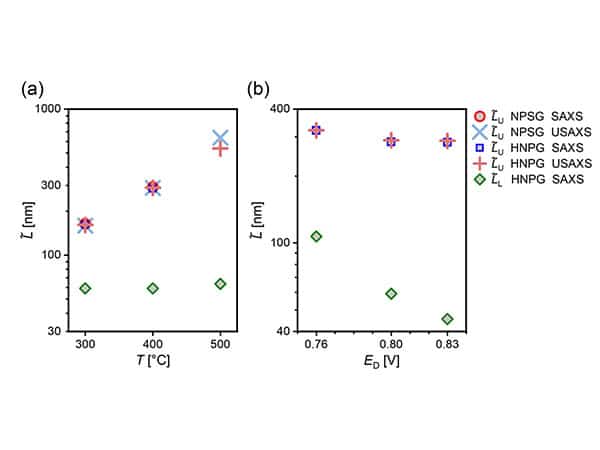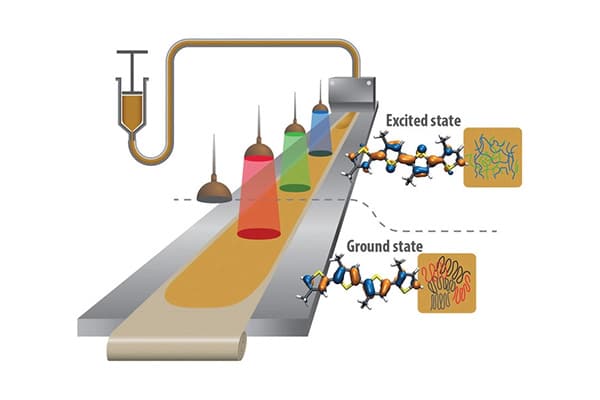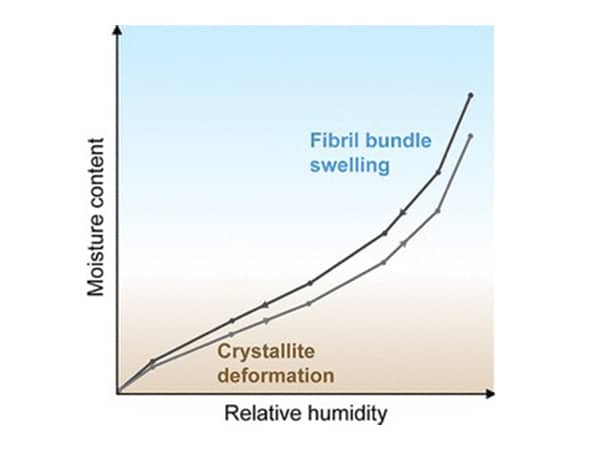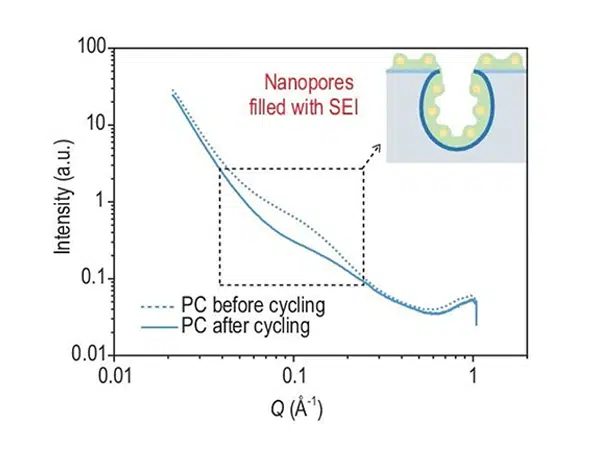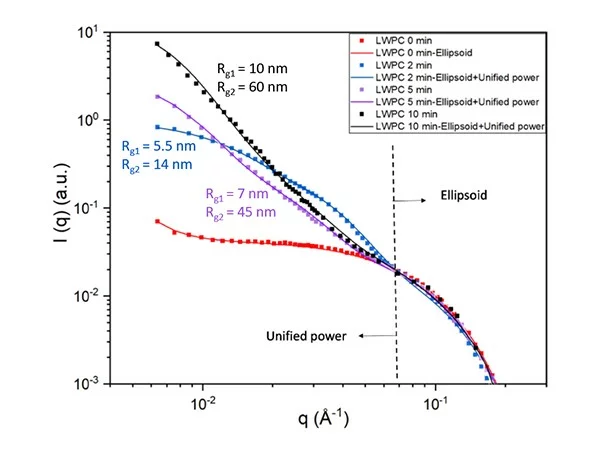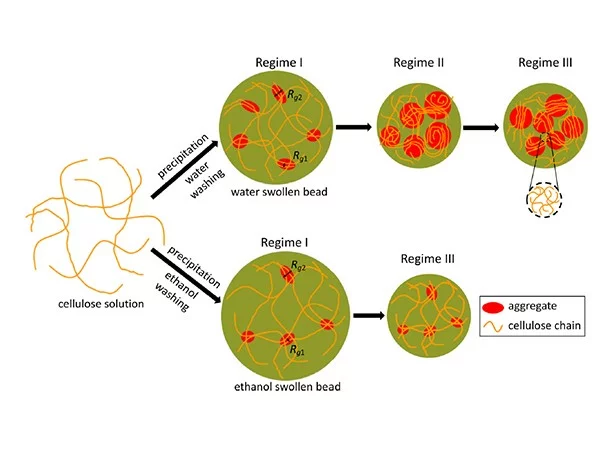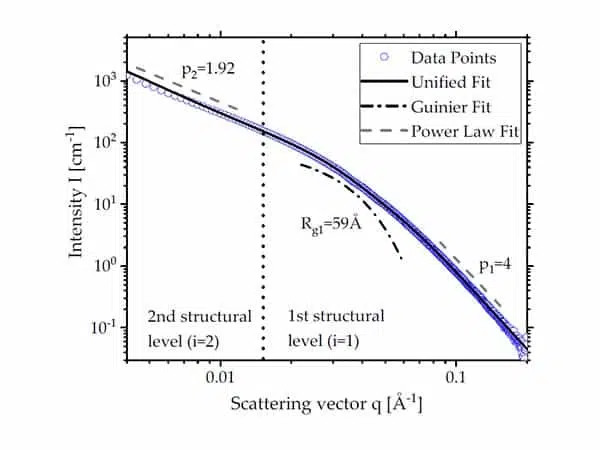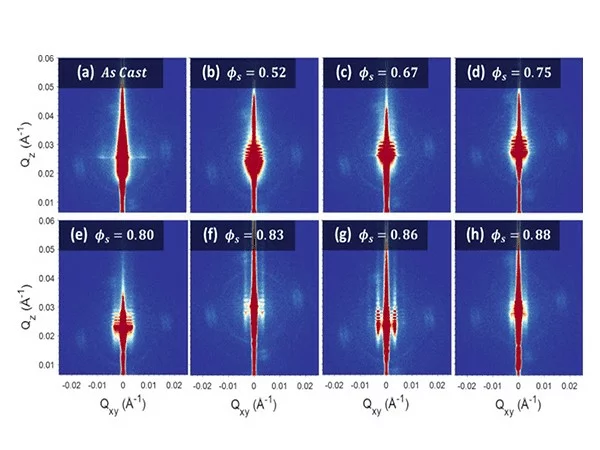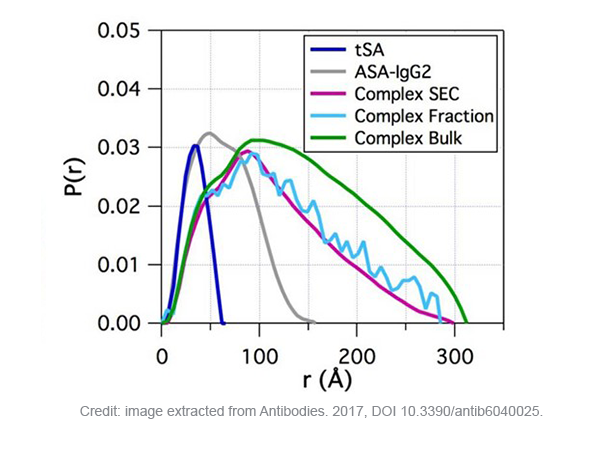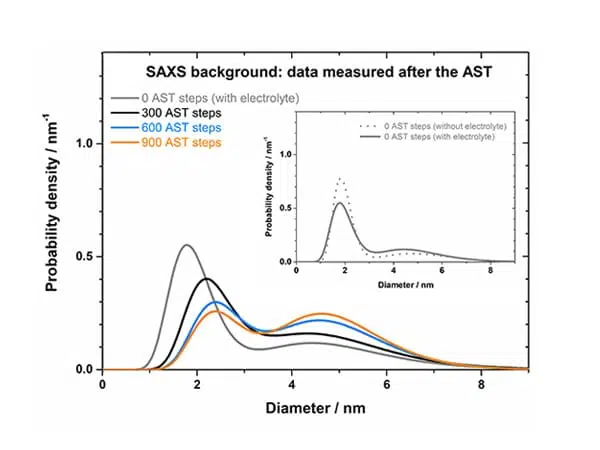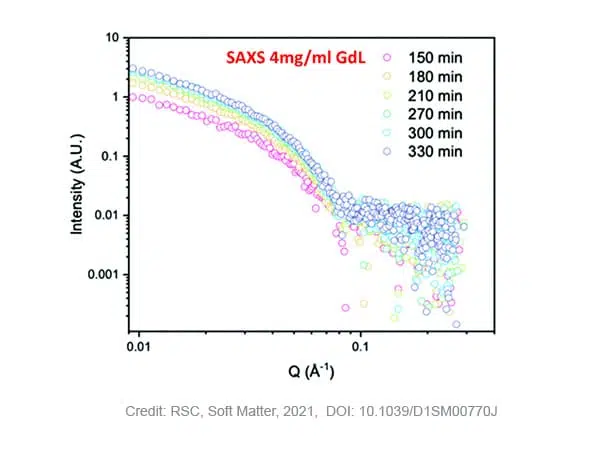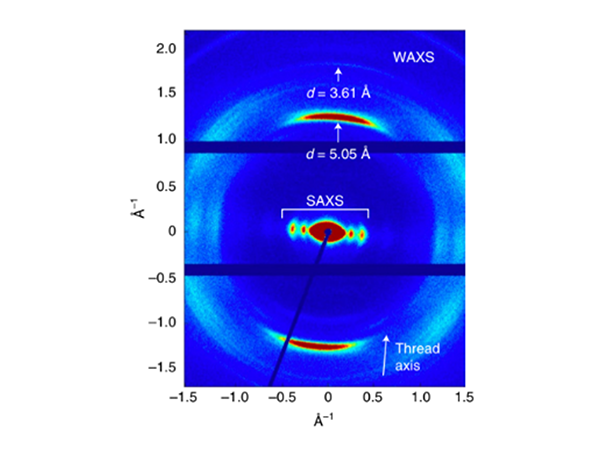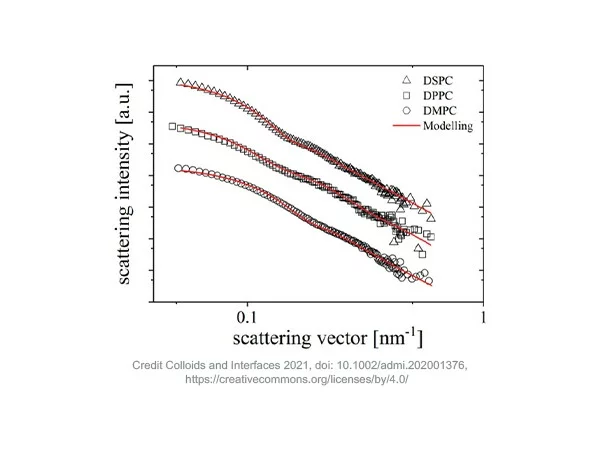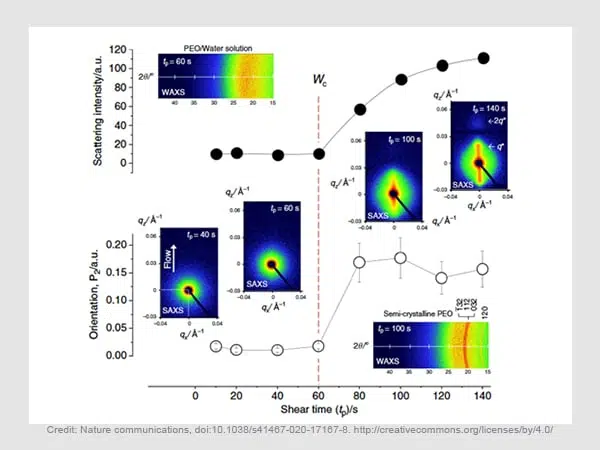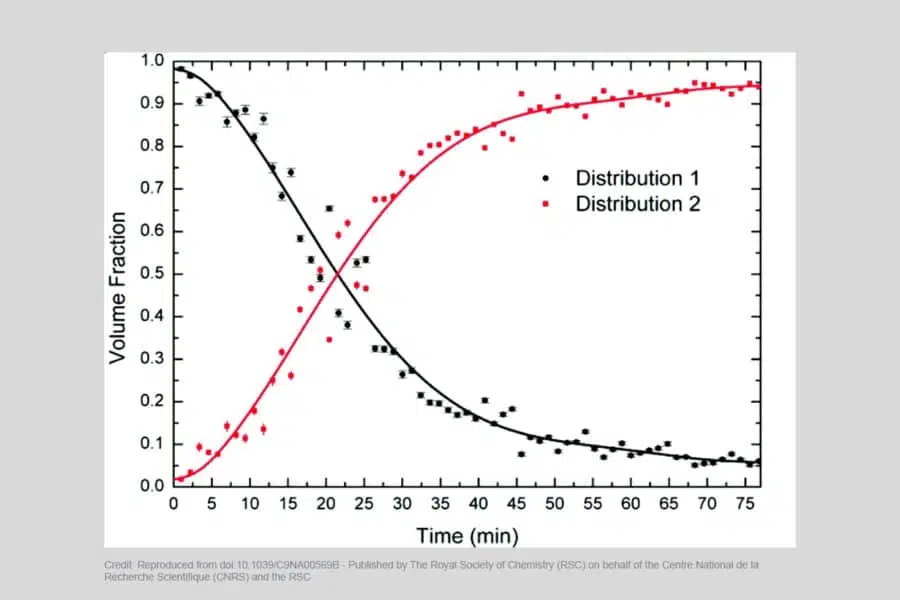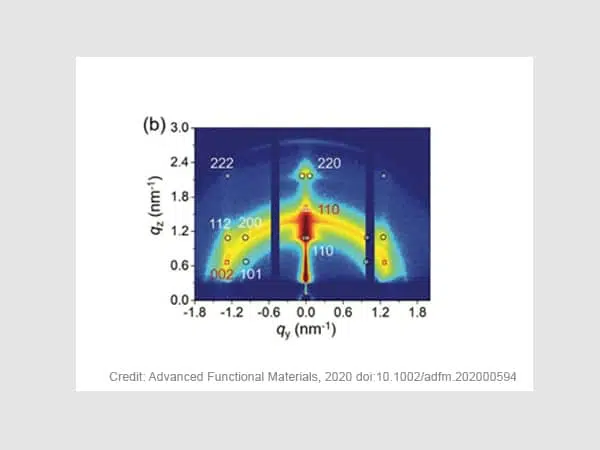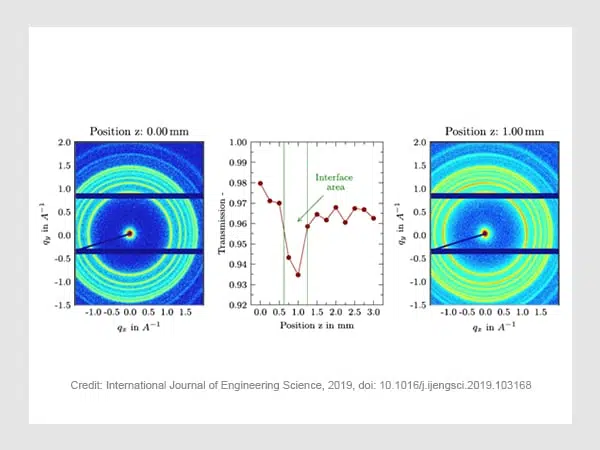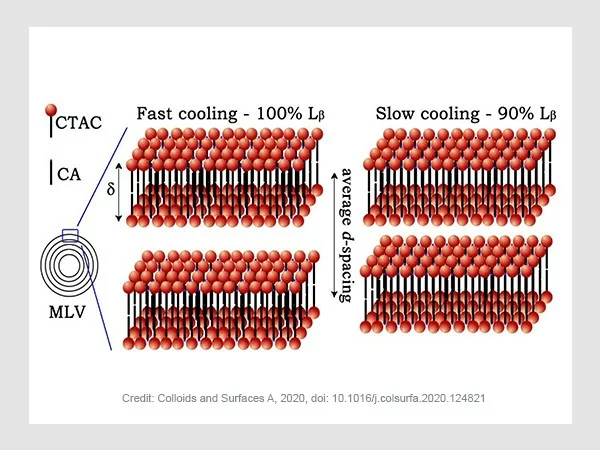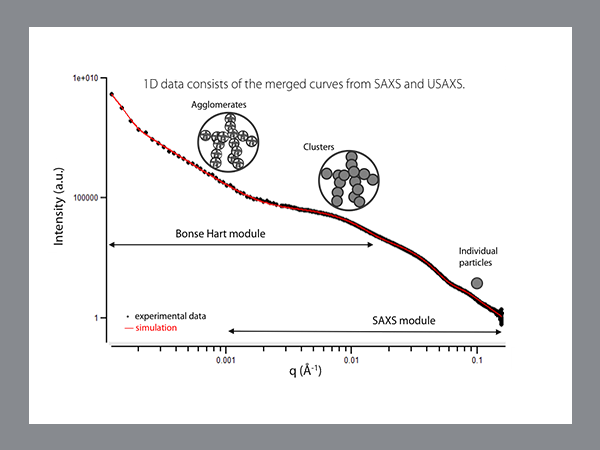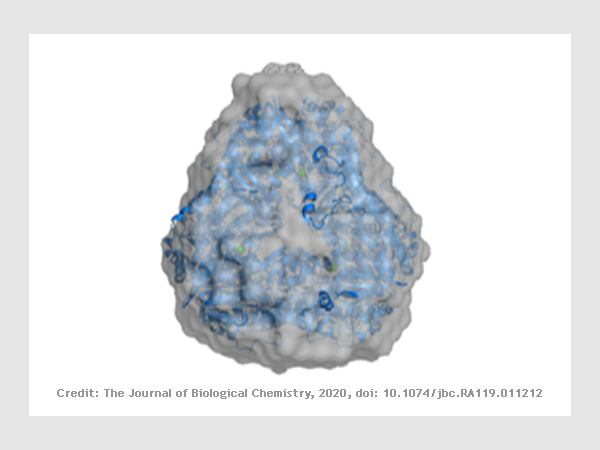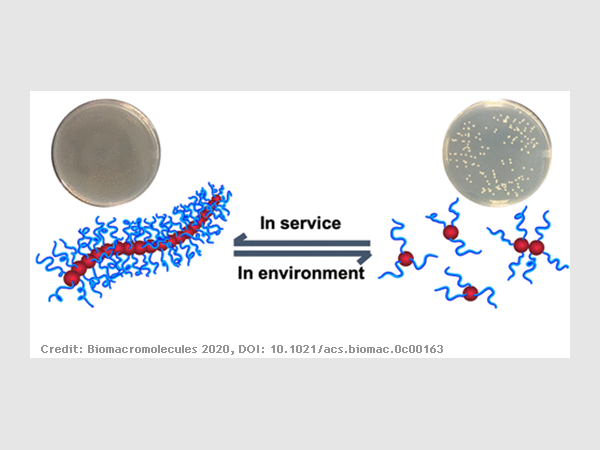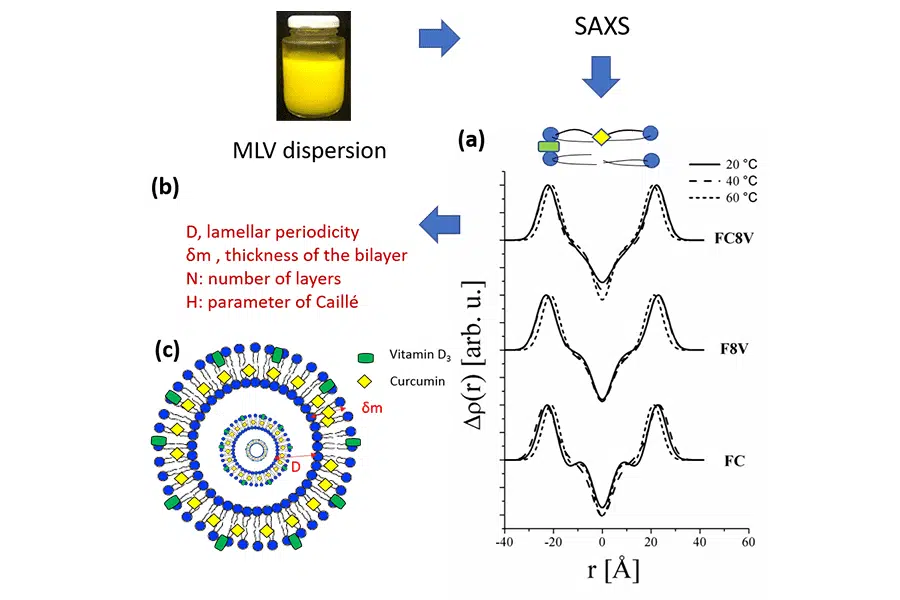Eye on publications & Application highlights
How can SAXS and USAXS analysis be used to characterize the tunable microstructure of hierarchical nanoporous gold?
Dealloyed hierarchical nanoporous metals have emerged as a novel category of functional materials...
How does visible light impact the morphology of organic semiconductors?
Organic semiconductors (OSCs) are promising advanced materials owing to their many attractive properties including their lightweight, mechanical flexibility and processability. They have thus interesting prospects for use in various applications such as ...
How does moisture affect the nanostructure of wood?
The last decades have seen an increase in climate protection awareness as well as significant advances in bio-based nanotechnology. Therefore, given the stringent sustainability requirements, wood-based nanomaterials have found applications in numerous fields such as energy, biomedicine, construction or as a replacement for petroleum-based polymers . Nonetheless, the performance of…
How can the smart design of carbon anodes improve the performance of sodium-ion batteries?
These days, batteries are ever-present making it difficult to picture modern life without them. Worldwide the rechargeable batteries market value has seen a rapid increase over the last decades driven by the global awareness of environmental protection, the expanding electric vehicle market, and the support shown by governments around the…
What structural changes are induced during heat treatment and acidification in non-fat milk model systems?
Production of milk-based products has increased by more than 60% globally over the last three decades and is projected to grow faster than most other main agricultural commodities, over the next decade.
Manufacturing of cellulose-based products – how do the nonsolvent composition and processing parameters influence the structure of regenerated cellulose?
- Application Highlight - Cellulose is the main constituent of plant fiber making it the most abundant organic compound on Earth. Owing to...
How can fractal structures and single particles be studied simultaneously?
The study of metal oxides nanoparticles (NPs) is an area of intense scientific research owing to their distinct properties which make them excellent candidates for a variety of...
Fast self-assembly of ultrahigh molecular weight block copolymers – How GISAXS is used to monitor the morphology evolution –
Block copolymers (BCPs) are a special class of materials that feature two or more chemically distinct monomer units grouped into discrete polymer blocks which in turn are...
SAXS as a tool for characterizing monoclonal antibody-protein antigen interactions
Detailed biophysical description of antibody-protein antigens interactions is important for guiding physical characterization and molecular engineering of therapeutic targets. Proteins can...
Can time-resolved degradation of catalysts be studied with operando laboratory SAXS?
To combat climate change, the use of renewable energies is regarded as one of the top priority actions to be implemented both by industries as well as private individuals. Today the use of so-called clean energy is ...
Understanding hydrogel phase transitions with SWAXS
Gels are interesting materials from many perspectives. Their ability to absorb large amounts of solvent results in a range of attractive material behaviors...
Self-assembly – How SAXS/WAXS helps investigate nanoribbons formed with aramid amphiphiles for more stability
Hierarchical self-assembly of small molecules is a tried and tested method to obtain nanostructured materials. The intrinsic dynamics and (bio)degradability of these materials ...
Small-Angle X-ray Scattering for the characterization of liposomes in pharmaceutical applications
- Application highlight - Small-Angle X-ray Scattering (SAXS) is an invaluable tool for the analysis of liposomes. Liposomes are a class of nanoparticles which are characterized by ...
Mimicking nature: a shear-induced phase transition in poly(ethylene oxide)
Spider silk has been a thankful subject for biomimetic research over the course of many years. It is well-known for its incredible tensile strength and biocompatibility...
In-situ Small Angle X-ray Scattering for nanoparticle characterization
- Application highlight - Nanoparticles are characterized by the fact that they have at least one dimension in the nanometer range, i.e. between 1 and 100 nanometers. This means that ...
GISAXS reveals packing of PbS quantum dots for use in solar cells
Quantum dots are semiconducting nanocrystals of about two to ten nanometers in size. Due to their tunable optoelectronic properties, they find use in a range of applications such as LEDs, single-electron transistors, medical imaging and solar cells. When used in solar cells, light produces an electron-hole pair in the quantum…
SAXS/WAXS results help elucidate structure-function relationships in foams
Foams – gas trapped in solids or liquids – are common materials, found all around us. Liquid foams can be found in cosmetic formulations, home care products and food, whereas solid foams find use in mattresses, insulation and lightweight structures in automotive, space and aircraft applications. Solid foams are cellular…
Different production process results in different gel properties in a surfactant based gel for pharmaceutical and cosmetics products
Different production process results in different gel properties in a surfactant based gel for pharmaceutical and cosmetics products.
Analysing polymer nanocomposites with X-ray scattering
- Application highlight - Nanocomposites are a type of composite material in which nanoscale particles or fibres (the filler) consisting of one or more materials are dispersed throughout a bulk (matrix) material. Both the filler(s) and the matrix retain elements of their own bulk material properties, while the nanoscale parameters…
Lab-based SEC-SAXS in combination with several other techniques elucidates the quaternary structure of PieE, an enzyme involved in antibiotic biosynthesis
Lab-based SEC-SAXS in combination with several other techniques elucidates the quaternary structure of PieE, an enzyme involved in antibiotic biosynthesis
SAXS helps to show the effect of an environmentally benign antibiotic on mammalian and bacterial cell walls
SAXS helps to show the effect of an environmentally benign antibiotic on mammalian and bacterial cell walls
Functional foods characterization at the nanoscale using SAXS
- Application highlight - Development of nanocarriers for functional food delivery is an active area of research. Both the development and the production process require characterization techniques that provide information about how nutrient loading and processing conditions influence the final structure and stability of nanocarriers and their dispersion in food.…

